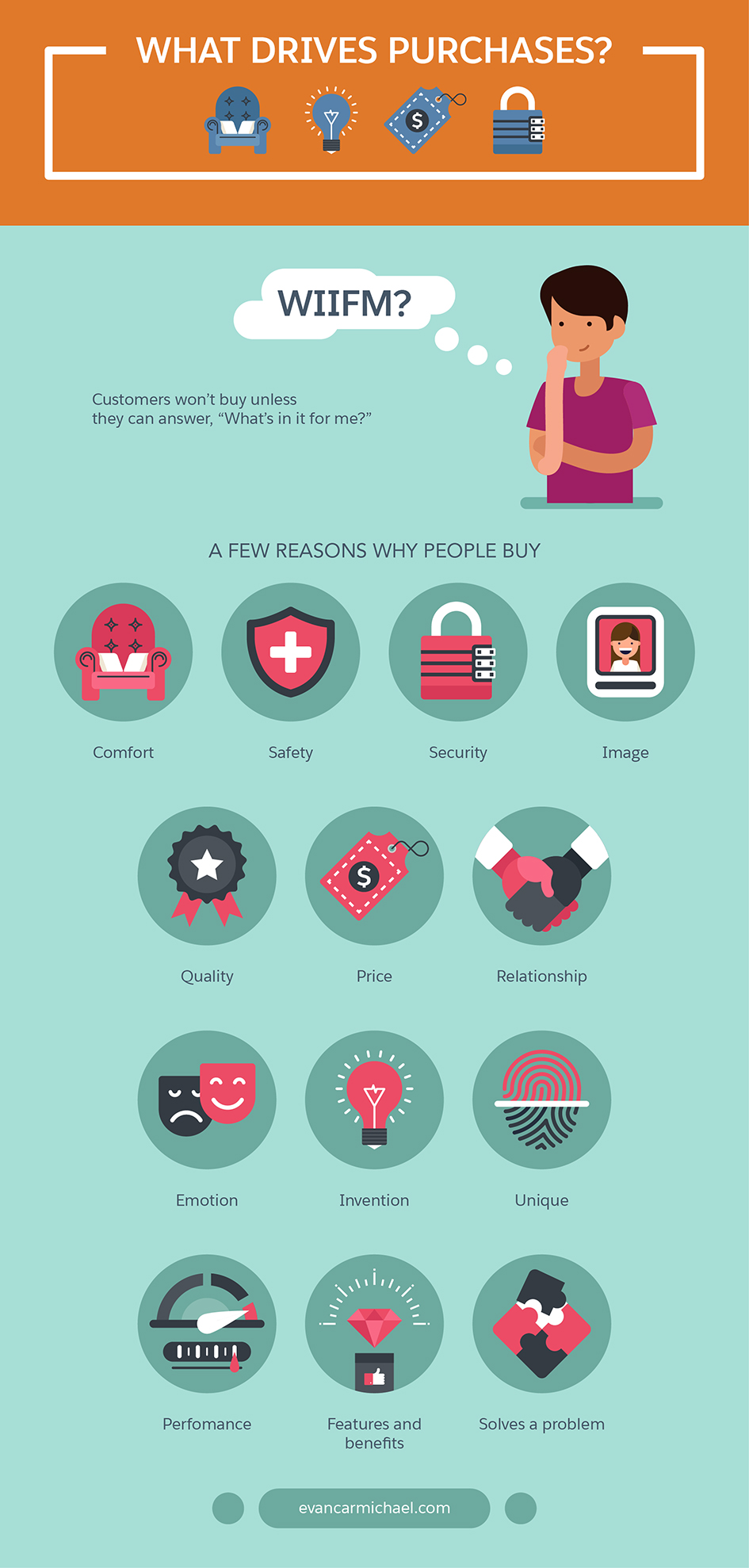A significant amount of time and effort goes into cultivating and nurturing a relationship between a salesperson and a client. It involves research, conversations, traveling, creating presentations, and possessing a detailed knowledge of products and services. With so much going into the crafting of this relationship, it makes perfect sense for clients to want to reach out to the person at the company they’re most comfortable with when they have a question or a concern.
In light of this, shouldn’t your sales team have every tool at their disposal to ensure that their client receives an exceptional customer experience at every step of the process? Delivering on the promise of a personalized, high-quality customer experience is a multi-departmental effort, but salespeople have a crucial role to play as the representatives who get the most face time with customers. Since the customer experience is composed of all the numerous interactions with your company, from browsing the website to receiving a thank you note from their sales rep after a deal is closed, the best strategy is to build a customer-centric ethos into your culture at every level. Instead of sending your salespeople a to-do list of tasks designed to enhance the customer experience, this will allow them to achieve that goal through the duties they perform everyday.
Technological Trends that will Help Sales Teams
- Computing everywhere at any time thanks to mobile devices
- Advanced, pervasive, invisible analytics that layer seamlessly on top of linked data on customers, sales activities, and salespeople
- Data and analytical insights tailored and targeted for the specific situations faced by customers and company personnel
- Cloud computing and software-defined infrastructure

Use technology to empower your employees
New technology has greatly expanded the opportunities for salespeople to more efficiently serve their customers. With data hosting on the cloud, mobile devices, and ever-present mobile broadband connections, your salespeople have the power to answer nearly any question their client poses, no matter where they are in the world. This technology is now ubiquitous and inexpensive, and can be used by any organization, from a small startup to a massive multi-national corporation.
Perhaps the most intriguing benefit of many new cloud services solutions that are proliferating in the current market is just how simple they are to use. This means you can train even your most technophobic salespeople how to use them effectively and efficiently in order to present a more streamlined level of service to the customer. Many platforms automatically integrate data from sales, accounting, and customer service into one easy-to-decipher place, so your salespeople can be better equipped to present clear and concise answers to clients without delays.
Stress that not all deals need to be closed
Sometimes the best way to serve a potential customer is to know when the deal isn’t right for them. All sales managers receive pressure to increase revenue, and it’s counterintuitive to many sales professionals’ instincts to leave a deal on the table. But there may be times when landing an account will only lead to a lackluster customer experience for the client and a frustrating ordeal for your employees. Allowing your salespeople to have more control over the customer experience means teaching them how to detect if the experience is unlikely to be fruitful from the start.
When the fit doesn’t align between the company and the customer, it’s generally for one of two broad reasons: product or financial. As much as your salespeople believe in your product and want to speak confidently about why it can alleviate the client’s pain points, there will be times when they need to recognize that other solutions may be a better fit for their client’s needs. This is where intensive sales training and teaching your team to thoroughly consider every sales opportunity from the customer’s perspective come into play. If the sales rep knows they have the ability to discourage a sale if it won’t be beneficial for the customer, they have the potential to extinguish what could result in a poor customer experience.
Alternatively, if purchasing your product is going to put the client in a financially untenable position, it’s ethical to walk away from the sale. It has the potential to save all parties from the inevitable consequences of a client’s inability to pay.
Give them the customer data they need
Many organizations think that customer demographics and qualitative data should be the sole domain of the marketing department; however, savvy sales reps can also use this information to fill gaps in the customer experience pipeline. Data points such as a detailed map of the customer’s buying journey and records on what they buy, how they buy, and when they buy can be critical for the sales rep to create a strategy when selling to a particular client.
Access to this information allows them to create a more personalized buying experience, one where the customer feels like their needs are being addressed before they even vocalize them. It also presents the salesperson with a unique opportunity to wow the client and make a memorable impression that will form part of the core of their cumulative experience with your company. These customer engagements can then be tracked and shared throughout the sales department, and even the organization as a whole, to improve customer experience best practices.
The Three Steps to Creating Top Customer Experiences
- Recognize
- Injects tremendous loyalty into your customer base
- How to implement:
- With technology, prove you pay attention to their purchases
- Automatically remember their preferences
- Every transaction should cater to their needs
- Personalize
- Treat customers like VIPs
- Give them options, including discounts, sneak previews, and more
- Integrate interactive experiences along with in-store shopping
- How to implement:
- Customers want the same personalized, streamlined experience online and off
- Video chat with customers when they have questions
- Tap into Emotions
- Shopping can be an emotionally driven experience
- How to implement:
- Shopping or wish lists connect customers to companies
- For example, Walmart’s app lets users create shopping lists using voice input or by scanning bar codes while they shop

Create a customer-centric sales strategy
Perhaps the most crucial element in increasing your sales team’s role in the customer experience is to ensure that customer-centric policies are embedded in the DNA of their modus operandi. Every action, communication, and pitch should be undertaken with the goal of making your customer’s life easier, not increasing your revenue.
Honesty, empathy, and active listening form the crux of this approach. Being honest with your customers at all times, even if it’s detrimental to a potential sale, demonstrates to them that you care about their interests and well-being enough not to steer them into something that you don’t believe will help them.
By being empathetic, you purposefully put yourself in your customer’s shoes in an attempt to understand not only what they need to fix, but why they need to fix it. It’s a signal that you are committed to forging what will hopefully become a long-term and mutually beneficial relationship.
When you practice active listening, your customer instinctively understands that you didn’t come into the interaction with a bulleted list of product features that you were certain would close the deal. They’ll be more likely to trust that you actually want to help them. That trust forms the foundation of their collection of experiences with the company.
Include input from salespeople when crafting your marketing strategy
Many times, the customer experience actually begins with the marketing department. Whether it’s an advertisement, a piece of promoted content, or a promo that directs them to the website, marketing strategy plays a key role in how the customer’s first impression will shape their experience with your organization. In order to give them the best possible experience from the first moment contact is initiated, it’s crucial to receive input from the sales team.
Your salespeople may know more about what customers are looking for than any other members of your team. They have the benefit of engaging in numerous conversations with actual buyers, getting them to open up about their businesses and their problems. Sales can provide crucial insights to the marketing team that will help you develop a more intuitive strategy for engagement. By inviting representatives from the sales department to sit in on marketing planning sessions, and by utilizing their notes taken from meetings with clients, you can create an exceptional customer experience from the point of initiation.
What Drives Purchases
- Customers won’t buy unless they can answer, “What’s in it for me?”
- A few reasons why people buy:
- Comfort
- Safety
- Security
- Image
- Quality
- Price
- Relationship
- Emotion
- Invention
- Unique
- Performance
- Features and benefits
- Solves a problem

Teach the power of emotions
No matter how many people would like to believe their decisions are only based on hard data and prices, emotions are an ever-present component of the sales process. This makes some sales professionals nervous—there aren’t many reliable ways to measure and track the role that emotions play for the customer. It’s understandable to be uneasy about variables that are out of your control, but you can actually use the customer’s emotional connection to the sale to enhance their satisfaction.
The sales rep has to consider what the customer ultimately hopes to gain from the transaction. Yes, they want to help their organization achieve operational goals and improve their working life, but they also derive personal value from the process as well. If their experience with the sales team causes them to feel pride or increases their perception of respect among their colleagues, they are more likely to report high levels of satisfaction.
Connect customer experience satisfaction scores with sales goals incentives
Incentives have the power to shape what your salespeople value, which will affect how they interact with the client during their conversations. If incentives are only tied to revenue goals, then revenue is more likely to be seen as the number one priority.
Just because “sales” is in the name of the department doesn’t mean that selling is the only activity they engage in that provides value to the organization. If you reward the sales team for delivering an outstanding customer experience, it will teach them that this is a goal that should be prioritized throughout every engagement they have with a customer.
Share "7 Ways To Give Salespeople More Control Over The Customer Experience" On Your Site




